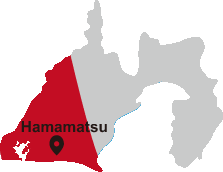Let's celebrate 20 years old
Coming-of-age Day and Coming-of-age Ceremony
In Japan, when a person turns twenty years old, they are considered to have "turned into a person" and therefore become an adult. Additionally, activities that were previously forbidden because they were viewed as children, such as drinking and smoking, also become permissible from the Coming-of-age Day.
Blessing and encouraging young people who have become adults, the Coming-of-age Ceremony is held in various municipalities or at middle school (12 - 15 years old) districts.
Currently, the Coming-of-age Ceremony takes place on the second Monday of January. Most places in Japan hold the ceremony either on that Monday or one day earlier on the Sunday. Young people blessed at the ceremony are called the "new adults". Through the ceremony, new adults realize that they are now adults and become aware of the various responsibilities they need to fulfill. In addition, many new adults reunite for the first time since graduating middle school and other young people who left their hometowns early on would also return to attend the ceremony. Hence, the ceremony also has a nostalgic feel of a class reunion.
The origin of Coming-of-age Ceremony
It is said that ceremonies celebrating coming-of-age started in the Nara period. The current day format is said to have started from the Youth Festival in the post-war period. After the war, many people despaired and lost their motivation. On November 22, 1946, the Youth Festival was held in Saitama to give courage and hope to young people who were going to be the future of the country. Ceremonies based on the Youth Festival program spread across the country and became today's Coming-of-age ceremony. Two years after the Youth Festival, Coming-of-age Day was officially recognized as a day "to realize one has become an adult and encourage youth to be independent and self-reliant".
※January 15 was designated as the Coming-of-age Day until 1998.

Photo : Shiiki Photo Studio
Coming-of-age Ceremony, Furisode and Montsuki Haori Hakama

Photo : Shiiki Photo Studio
Many females wear furisode at the Coming-of-age ceremony. The name "furisode" comes from the swinging of long sleeves and is said to have begun in the Edo Period as a formal wear for unmarried females. Since then, it has been worn at various formal and festive occasions.
Women wear furisode and men wear montsuki haori hakama. At the beginning, montsuki haori hakama was the most formal dress combining a family-crested haori coat with a hakama skirt. Recently, many rent haori hakama at rental shops and sometimes attach their own designed family crest on it. In addition, most modern day men play sports so there is increasing attention on crested haori hakama.
Remembering Coming-of-age
Coming-of-age is one of the happiest and most extraordinary events in life. Many young people dress up for the occasion and have their photos taken. Watching the new adults from the side are parents who raised and nurtured them. Coming-of-age Day is a day celebrating youths becoming adults. It is also a day when new adults express their gratitude towards their parents. Write down your words of gratitude on photos of this proud moment!
 Hamamatsu Japna Language Collge students did the taking a ceremonial photograph of the Coming-of-age!!
Hamamatsu Japna Language Collge students did the taking a ceremonial photograph of the Coming-of-age!!2019.10.7 update
Content may be subject to change after publication. Please also note that we are not accountable for loses and damages that may occur as a result of said changes.





